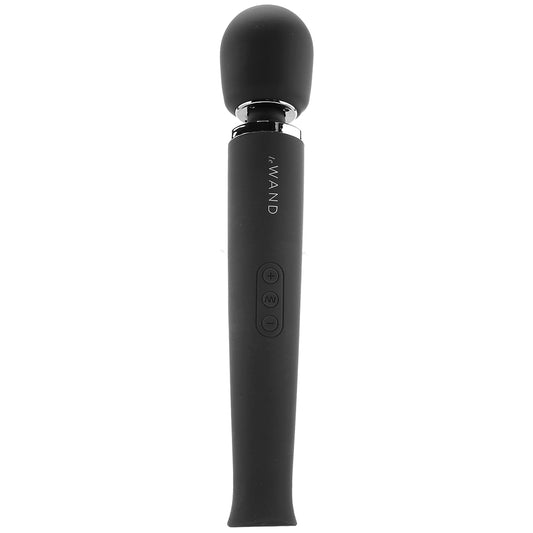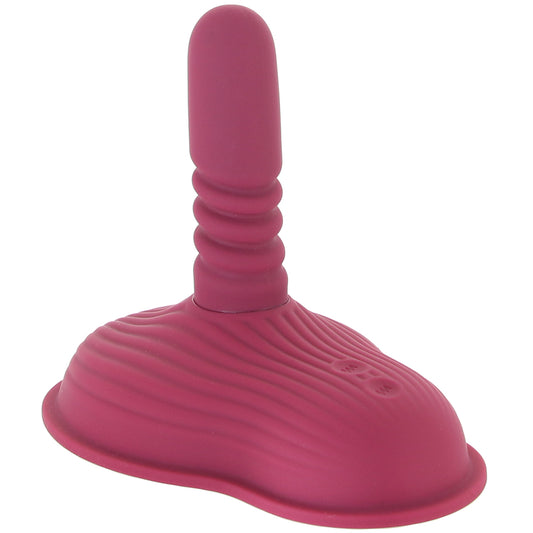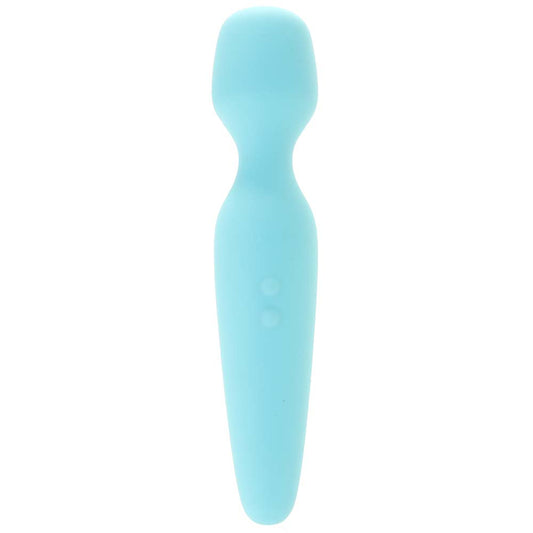
Vibrators just may be one of the best inventions of all time, if we do say so ourselves. Over half of the women in the United States have used a vibrator at least once in their lifetime for sexual pleasure, and many men use them as well. So, clearly, everyone likes to enjoy a little sexual arousal romp from time to time. But there are quite a few myths out there about where vibrators come from and what they are used for - some people have heard that vibrators were used to treat hysteria, and they were, but that isn’t exactly where they were conceived. In fact, vibrators have been around a lot longer than that, but we’ve only just recently perfected them for sexual pleasure!
So, how does a classic vibrator work? What benefits do they bring? And what is a vibrator used for? Let’s take a quick speed course through Vibrators 101 and grab all the answers you’ll ever need for your next pleasurable session between the sheets.
What Is A Vibrator?
A vibrator is an adult sex toy that vibrates – sounds pretty simple, right? It is a pleasurable tool that can be used either for masturbation internally in the vagina or in the anus or externally on the clitoris, penis, nipples, perineum, and more. Many women, in particular, find that using a vibrator is one of the easiest ways to reach a satisfactory female orgasm. So, if you’re not in the vibrator club, you may not know what you’re missing outside of your sex life with a partner!
Vibrators don’t have a particular “look,” though the phallic-shaped toy is the most common. However, there are other types of vibrators, including bullets, wands, suction-based vibrators, and more. Some are designed to go vibrate over the clitoris and others are created for vaginal insertion. Often, you are able to use a vibrator however you want. There are a few different “types” of vibrators out there to help achieve an elevated orgasm, including:
- External clitoral stimulation
- Internal vaginal stimulation
- Internal and external stimulation
- Anal stimulation
- Prostate stimulation
- Penis stimulation
There are even thrusting vibrators and vibes that come with a remote control so that someone else can control the vibrations when engaging in partnered sex. Oh, the possibilities!
How Does A Vibrator Work?
Those “oh-so-pleasurable” vibrations come from somewhere – but where? A vibrator is controlled by a pretty powerful motor. The motor is actually unbalanced so that it creates the vibrations that feel good for the user. Some vibrators have different modes that control how fast the motor goes and how it stops and starts. The more modes that a vibrator has, the complex the motor system is.
Vibrators are powered by either a traditional battery or with a rechargeable battery. It is more common to see a rechargeable power source today because people don’t want to be caught in the mood without a battery. How much power you get out of a rechargeable dildo, vibrator, or toy depends on the speed at which you use them, the mode you use, and the toy itself.
Over time, like most battery-operated toys, it is likely that your vibrator will start to lose power, and it may not work as well for sexual stimulation. Some people eventually “wear out” their vibrators and have to buy a new one. But hey, as we say, if you wear out your vibrator then you’re having fun! And that’s what it’s all about!
What Is A Vibrator Used For?
Well, the simple answer is pleasure! But there are many different ways that you can use a vibrator to elevate your sex life. Some people choose to use them alone, especially when they need help with masturbation. Others will use vibrators when they are playing with a partner, either as foreplay or during intercourse. Some people even like to use a vibrator to put on a show for their partner! It’s about your pleasure preferences!
People use vibrators for all kinds of reasons, ranging from the need to have an orgasm, to helping themselves fall asleep at night, to relieving stress, to trying to ease menstrual cramps. Why you use a vibrator is a deeply personal thing - and the good news is that there is truly no wrong reason to use one. So, keep your vibrating companion handy for light-hearted, stress-relieving, heart-pounding pleasure!
The “Skin” Matters
When it comes to vibrators, the feel is where it’s at! Apart from the type of stimulation that you need, you may also want to think about what the vibrator is made of as well. There are some vibrators on the market today that aren’t body safe and can actually lead to an infection – so, clearly, we want to avoid those! If you are buying a vibrator, you should absolutely look for one that is covered in a nonporous material.
The problem with buying a vibrator that is made out of a porous material is that there are small holes that you cannot see, and they can harbor bacteria which could lead to many different types of infections.
This means you want to avoid vibrators that are covered in:
- Jelly latex
- Jelly-rubber
- Polyvinyl chloride (PVC)
- Thermoplastic rubber (TPR)
- Thermoplastic elastomer (TPE).
Instead, you want to look for toys that are made out of silicone, ABS plastic, stainless steel, or even glass. These materials are safe, sleek, and sexy!
If you haven’t purchased your own vibrator before, it is best to start with a silicone vibrator, as this is a body safe material, it transmits vibrations extremely well, and is easy to keep clean. First time users may also have a good time with the “wand” style vibrator. Are we excited yet?
Buying A Vibrator
It’s go time! Now that you know all about vibrators, you may want to invest in one yourself. We understand that this is a big purchase and can be intimidating if you haven’t purchased one before. Since there are quite a few different types of vibrators that you can purchase, you may have to try a few before you find “the one” that you really like. If you aren’t sure how to choose a vibrator, consider asking your close friends what they recommend and get suggestions.
A good rule of thumb is to start smaller and then work your way up - don’t buy a larger than life vibrator to start, unless you’re sure you can handle it. If so, go for it! Maybe start with a clitoral vibrator and move up to an internal vibrator. If you like the clitoral vibrator, maybe invest in a suction vibrator. Like we said, the possibilities are endless! If you need help finding your first vibrator, check out affordable vibrators in our cheap sex toy collection. We have something for everyone so you can start with a vibrator for beginners and then work you’re way up.
Get the Most Out of Your Sexual Pleasure
Now, it’s just you and your vibrating buddy – and maybe your partner too! When you’re using a vibrator, the most important thing to remember is you need to be relaxed and ready for it. There is absolutely no shame in using one, but it’s probably a good idea to use a lubricant, also known as lube, to help you get the most out of your sensual rendezvous. If you don’t want to use a lubricant, you can use a lubricated condom (which will also make cleanup that much easier!). Some people will turn the vibrator on before they insert it, and others will keep it off. You should play around and see what feels better to you.
Vibrators are a great addition to your toy chest regardless of whether you’re single or in a relationship. There are even specific vibrators safe for pregnancy for when those hormones are running especially wild. You just need to be sure to buy a vibrator that is high quality and make sure to show it some TLC by learning how to clean a vibrator.
Once you find the vibrator that works for you, you are sure to see what the fuss has been about over the years. It may take you some time to get there and you may have to try a few different styles, but be patient, relaxed, and find your groove! You may not love the first one you try, but you will know as soon as you find your vibrating soulmate. For more information






